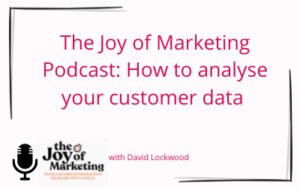As we begin to move on from the events of 2020, there is one topic that is once again taking centre stage: sustainability. In fact if anything, McKinsey argues that “engagement in sustainability has deepened during the crisis”. Although this is especially apparent within the clothing industry – where two-thirds of shoppers say “limiting impact on climate change is now more important to them since before COVID-19” – it’s important for all multi-channel retailers to act now.
In our latest Retail Leaders Forum on sustainability, we were joined by guest speakers Ryan Shannon, Managing Director and Merryn Chilcott, Sustainability and Technical Manager at sustainable activewear brand, BAM Bamboo Clothing. Ryan stressed that without taking steps towards building a sustainable brand, retailers will soon lag behind. Here are our top takeaways from the discussion.
1.Set an agenda for sustainability
As Ryan explains, sustainability can mean different things to different organisations, from becoming carbon-neutral to building a culture around people. BAM broke sustainability goals down into six key areas – climate goals, people goals, land goals, waste goals, chemical goals and water goals. Before you begin, you will need to define what sustainable means for your business and decide what you’re going to measure to assess impact and progress to improvement.
2. Get accredited
Becoming affiliated with sustainability organisations not only shows your customers you are committed to playing your part in creating a more sustainable planet, but it also brings practical advice, support and training to help you on your journey. Perhaps one of the fastest growing movements is B Corp (which stands for Certified B Corporations), who give as much consideration to their social and environmental impact as they do to any financial return. Other retail industry accreditations include Planet Mark and Fairtrade.
3. Swap out your materials
There are several small steps retailers can take to using more sustainable materials in products, packaging and processes. For example, instead of single-use plastics for catalogue wrapping, opt for compostable bags where possible. Secondly, with 72% of paper (and paper packaging) in Europe being recycled into new products, and 60% of the energy used coming from renewable sources, there has never been a better time to make the move to paper products and packaging if you haven’t already. Finally, if you’re a clothing company – or use any textiles in your products – consider using bio-based alternatives, such as regenerated cellulose and other natural fibres. BAM, for instance, now uses 93% biodegradable fibres.
4. Consider the whole supply chain
Until now, many retailers have focussed their sustainability goals on actions within their immediate environment. Instead, they should imagine the environmental impact of their product like an egg timer, where their activity in the middle of the supply chain is likely to have the least influence. By adjusting this mindset, brands can start to take more responsibility for the entire life cycle by having a greater influence at the top of the funnel (the raw materials) and the bottom of the funnel (post-purchase). The good news is that an increasing number of retailers are beginning to do so. For instance, BAM not only sources the most sustainable materials, but it also measures the impact of a garment post-purchase, depending on how many times it is washed, or what happens when it’s no longer fit for purpose.
5. Make the most of your messaging
Once you’ve considered the reasons you’re moving towards a more sustainable business model, it’s important to convey these to your customers in every communication you have with them. If you’ve implemented a new sustainable strategy, or have achieved one of your sustainability goals, shout about it! For additional recognition, you could turn it into a PR campaign, encouraging your customers to champion your brand.
6. Partner with sustainable schemes
There are several schemes that can help at various points throughout the supply chain, especially when it comes to circularity (continual use of resources through recycling). In the clothing industry alone, retailers are working with organisations such as Fashion Revolution, Fairwear Foundation, Sharewear, Reskinned and Thrift+, as well as mechanical and chemical recycling companies such as WornAgain and Renewcell
7. Appoint a sustainability champion
One of the best ways to embed the idea of being impact-positive and achieving your goals across the business is having a dedicated sustainability manager. If you’re not at the stage where you can hire someone specifically for the role, assign the responsibility internally to someone who is passionate about achieving your objectives and passes their energy and enthusiasm onto other staff. As part of this role, setting up a sustainability working group can bring together representatives, and goals, from each department.
8.Analyse your impact
Once you’ve started to implement sustainable strategies, being able to measure impacts will help you reach your goals, and working with a sustainability analytics partner can help provide the numbers to back up your story. By partnering with Green Story, for instance, BAM can demonstrate the emissions, water and chemicals customers save by purchasing one of its products over an alternative brand.
9.Be better, not perfect
Finally, the most important thing is not to worry if it doesn’t happen overnight. Remember, not all options will be commercially available or viable straight away. In time, technology and expertise will make the move towards sustainability easier and more affordable. But for now, the mantra is “be better, not perfect”. Set yourself realistic deadlines for each objective and focus on doing the best you can. Small steps can lead to great things before you know it.




